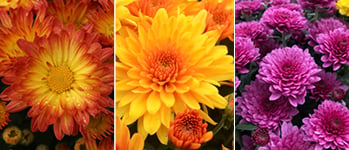Helen and Brice Marden's Caribbean Hotel, Slide Show
A gallery of photographs of artists Helen and Brice Marden's inn in Nevis, in the Caribbean, with gardens designed by Raymond Jungles, including close-up of many of the tropical plants on the property.

To read more about the gardens at Golden Rock Inn, read our article "Helen and Brice Marden's Caribbean Hotel."
The garden at Golden Rock Inn is significant both for its innovative design and diverse, original choice of flora. Phase one of its creation included more than 150 different genera of plants. At last count, there were some 20 species of palm, including the rare old man palm (Coccothrinax crinita) with its hairy, Cousin Itt-like trunk and black spikes, which is available only at certain nurseries for a hefty price. Another, the talipot palm, native to India, is one of the largest in the world. The garden’s 35-plus types of trees include the baobab, the red silk cotton tree with its deep crimson flowers, the powder puff tree, and the aptly named sausage tree.
Left: The entrance to Golden Rock Inn is purposely left junglelike and verdant.

A long-established Epipremnum aureum covers a remnant staircase.

The dramatic buttress of a kapok tree (Ceiba pentandra).

The contrast of burgundy Aechmea ‘Marcelino’ and Kalanchoe gastonis-bonnieri (donkey ears) is a classic example of Raymond Jungles’ landscape style.

Instead of typical Caribbean pastels, Helen Marden uses red for architectural accents and furniture.

After purchasing Golden Rock Inn, the Mardens commissioned architect Edward Tuttle to expand the terrace and create a dome surrounded by reflecting pools where guests can take in the garden while dining.



Helen Marden, at left, visits with interior decorator Suzanne Shaker.

The garden’s design includes winding paths that encourage slow exploration.

Alcantarea odorata and Bougainvillea ‘Hawaiian Torch.’

A colorful explosion of Aechmea blanchetiana ‘Orange Form’ and Philodendron magnifica surround a water feature, made from a historic wall that once carried water to the original plantation house’s cistern. Now a stream pours from a wall-top rill onto a sculpted boulder then cascades into a rocky grotto.

A sketch of the garden in a drawing by Raymond Jungles.

Cuban petticoat palm is one of 20 species of palm in the garden.

Alcantarea vinicolor, a bromeliad with spineless dark burgundy foliage, shows up often in Jungles’ gardens;?

Ceiba speciosa (silk floss tree) belongs to the same family as the baobab and kapok trees and has a bottle-shaped trunk studded with thick conical thorns that help store water during periods of drought.

Roystonea oleracea (Caribbean royal palm) plays host to a creeping philodendron.

Neomarica caerulea ‘Regina’ (giant apostle’s iris) is a tropical iris native to Brazil that flowers from February to August and gives off a delightfully fruity fragrance.




